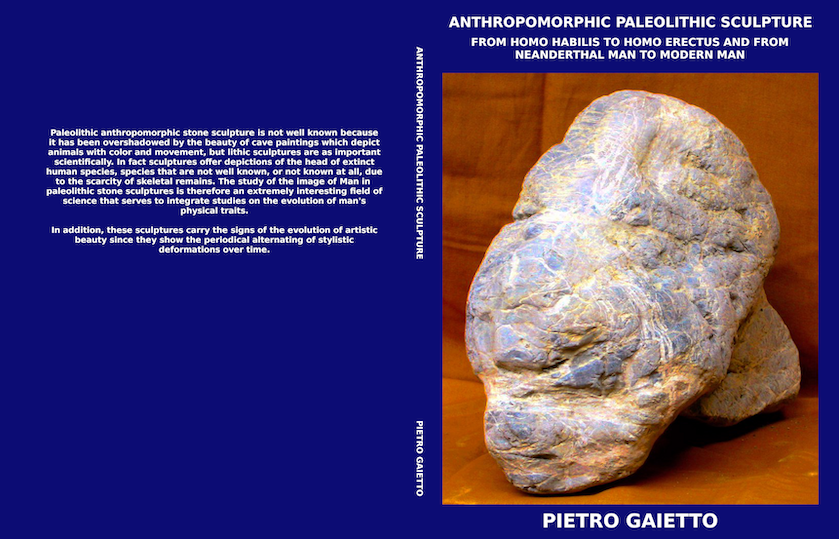PALEOLITHIC ART MAGAZINE
NEWS
"
ANTHROPOMORPHIC PALEOLITHIC SCULPTURE - FROM HOMO HABILIS TO HOMO ERECTUS AND FROM NEANDERTHAL MAN TO MODERN MAN "
by
Pietro Gaietto
From the Introduction:
"Paleolithic anthropomorphic stone sculpture is not well known because it has been overshadowed by the beauty of cave paintings which depict animals with color and movement, but lithic sculptures are as important scientifically. In fact sculptures offer depictions of the head of extinct humans; in particular those species that are not well known, or not known at all, due to the scarcity of skeletal remains. The study of Paleolithic anthropomorphic stone sculptures is therefore an extremely interesting field that serves to integrate studies on the evolution of man's physical traits.
In addition, these sculptures carry the signs of the evolution of artistic beauty since they show the periodical alternating of stylistic deformations which are "fashions" expressed by a certain population. At the same time though, personal artistic "ideas" stand revealed as they have in every other post-Paleolithic period.
Paleolithic anthropomorphic sculpture spans an immense period of time that is difficult to embrace in the imagination. Therefore, this type of sculpture must be also considered from the evolutionary viewpoint as far as its anthropologic aspects, in concurrent parallelism with the various material cultures and the stone tools that represent them, referred to in my work.
Evolution is here intended in its widest possible sense. In fact it covers art evolution in all its component parts (human subject depicted, technical workmanship, artistic stiles, composition, types of material, religious subject represented), as well as the physical evolution of the human head in addition to the evolution of stone tools and of the Paleolithic civilizations reflected in the sculptures..."
The Work, published in these days, groups the most meaningful anthropomorphic sculpture of the Paleolithic found in archaeological sites of Europe, Asia, Africa and America, and new acquisitions of the Gaietto Collection.
Beyond to the scientific formulation of evolutionistic type, it has didactic character for the interpretation of the represented human species, through the subdivision in components of every aspect of the sculpture.
It constitutes moreover a manual-guide for the archaeologists of the Prehistory who want to do research of Paleolithic sculpture on surface grounds.
The book can be purchased at
Lulu.com

EDITORIAL
Index
HOME
PAGE
Copyright©2000-2012
by Paleolithic Art Magazine, all rights reserved

